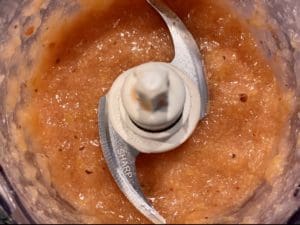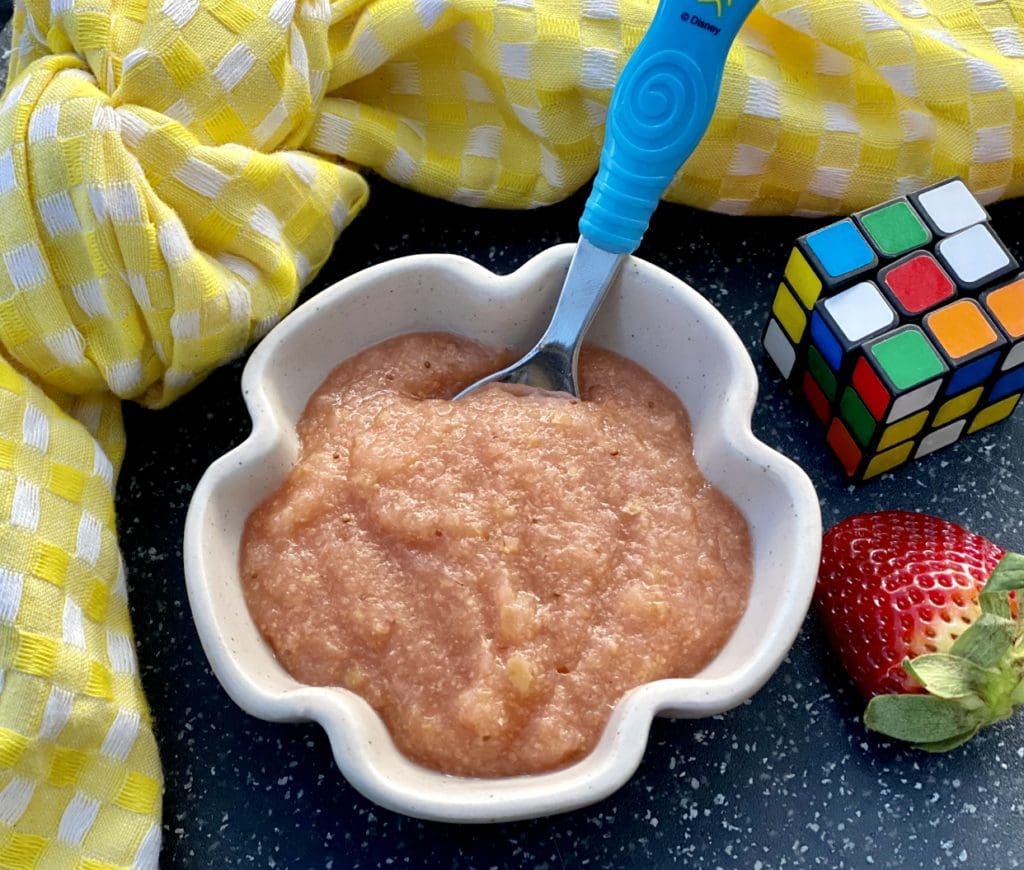
This palatable Apple, Strawberry and Polenta puree is a great way to introduce baby to polenta. A delicious snack for babies 6 months+
We finally booked a family holiday!
Kai, our 2-year-old toddler, is a COVID baby because he was born a few months before the pandemic. It’s incredibly bizarre how everything unfolded after he was born. We’re so grateful that we weren’t in hospital or overseas when COVID first hit.
It was just unimaginable! A pandemic so deadly that many countries around the world closed their borders. The sudden closure left many Australians trying to return home stranded in different countries. Such scary times!
We thanked our lucky stars that we didn’t travel because we couldn’t. I was heavily pregnant with our first child. However, if things were different, we may have been the ones stranded. My husband, Tomi and I would regularly go overseas twice a year.
We have been on holiday since the pandemic, but it would be a simple road trip. So we’re excited (and nervous) about our first overseas trip with Kai.
On short notice, Tomi’s company forced him to take holiday leave because of the number of weeks he has accrued. That meant I had to plan for a holiday on short notice, so New Zealand here we come!
Kai has never seen a real plane up close, so we do not know how he is going to react. Right now he absolutely hates loud noises, like when I’m using the blender. Fingers crossed for calm and non-dramatic flights! I don’t know how to handle people throwing daggers at us over a screaming child.
A quick 101 about polenta

I once thought polenta and placenta were the same things. Yes, laugh because I know you want to! However, I’m not entirely wrong, as they have some similarities. Both are edible, healthy and nutritious. Sounds very offputting, doesn’t it?, but it’s true, look it up, I dare you to! But a word of caution: what you may see may be graphic.
What is Polenta?
Polenta (also known as cornmeal) is dried corn that’s grounded into coarse flour.
Historically, polenta (porridge) is ‘peasant food’ eaten by the poor in Italy. However, times have changed because we often see polenta on the menu in trendy cafes and restaurants.
Is eating polenta healthy?
Polenta is gluten-free. It’s rich in plant-based fibre and protein, but low in fat and calories.
Polenta contains high amounts of complex carbohydrates. It breaks down slowly and is harder to digest, so it keeps the sugar blood level steady.
Some brands of polenta have salt added to it, so have a look at the ingredients label and stick to the ones that have 100% cornmeal for this Polenta Puree.
What does polenta taste like?
Polenta has a subtle, mild corn flavour. It’s bland tasting and will soak up other flavours from the dish. This means polenta is a suitable substitute for rice, bread and potatoes, etc.
Polenta is great for adding to baby food because it’s mild. Most babies don’t like strong-tasting food, so polenta is perfect to mix into their purees.
More baby recipes for your little one:
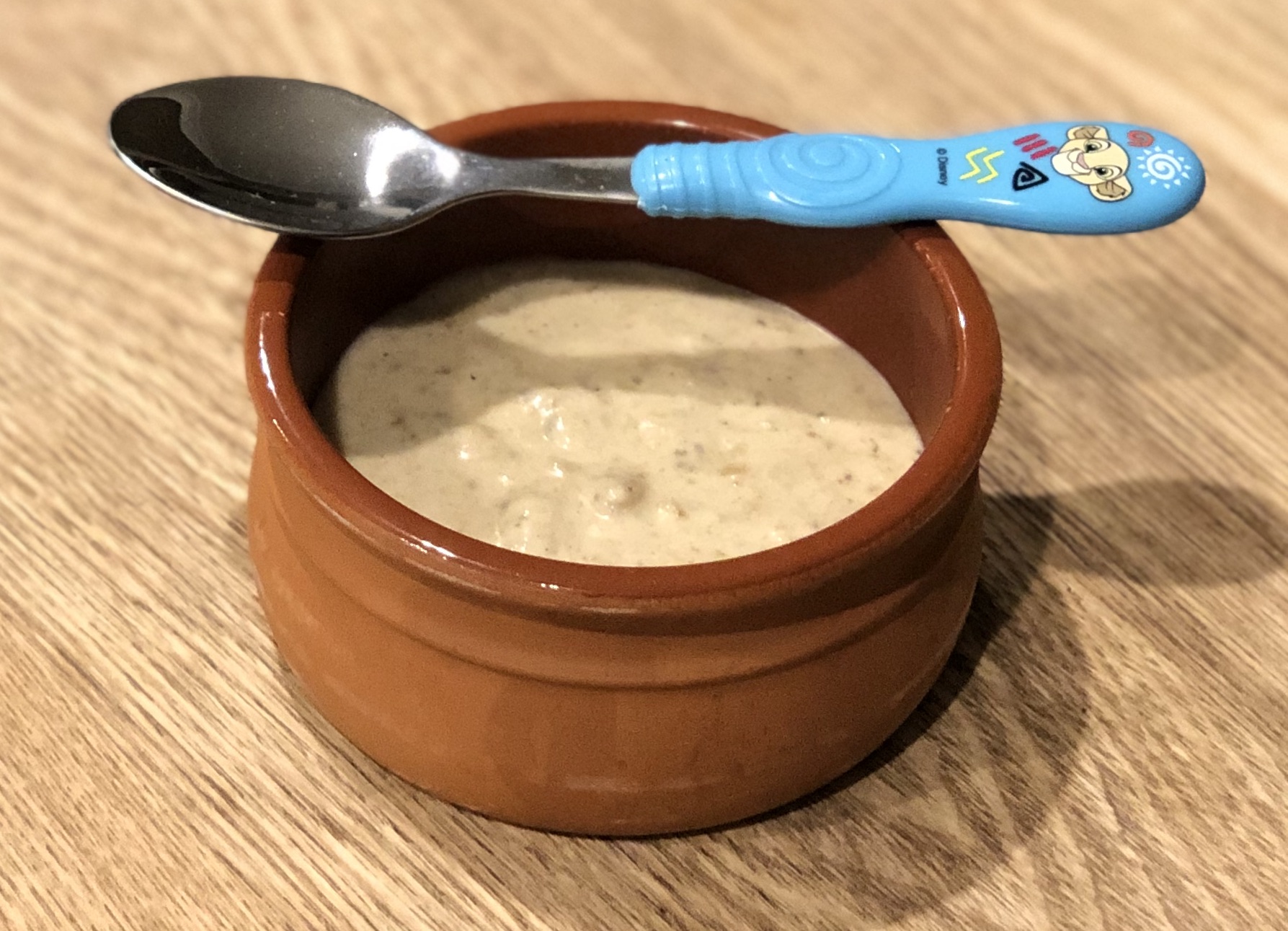
Simple Chia Pudding
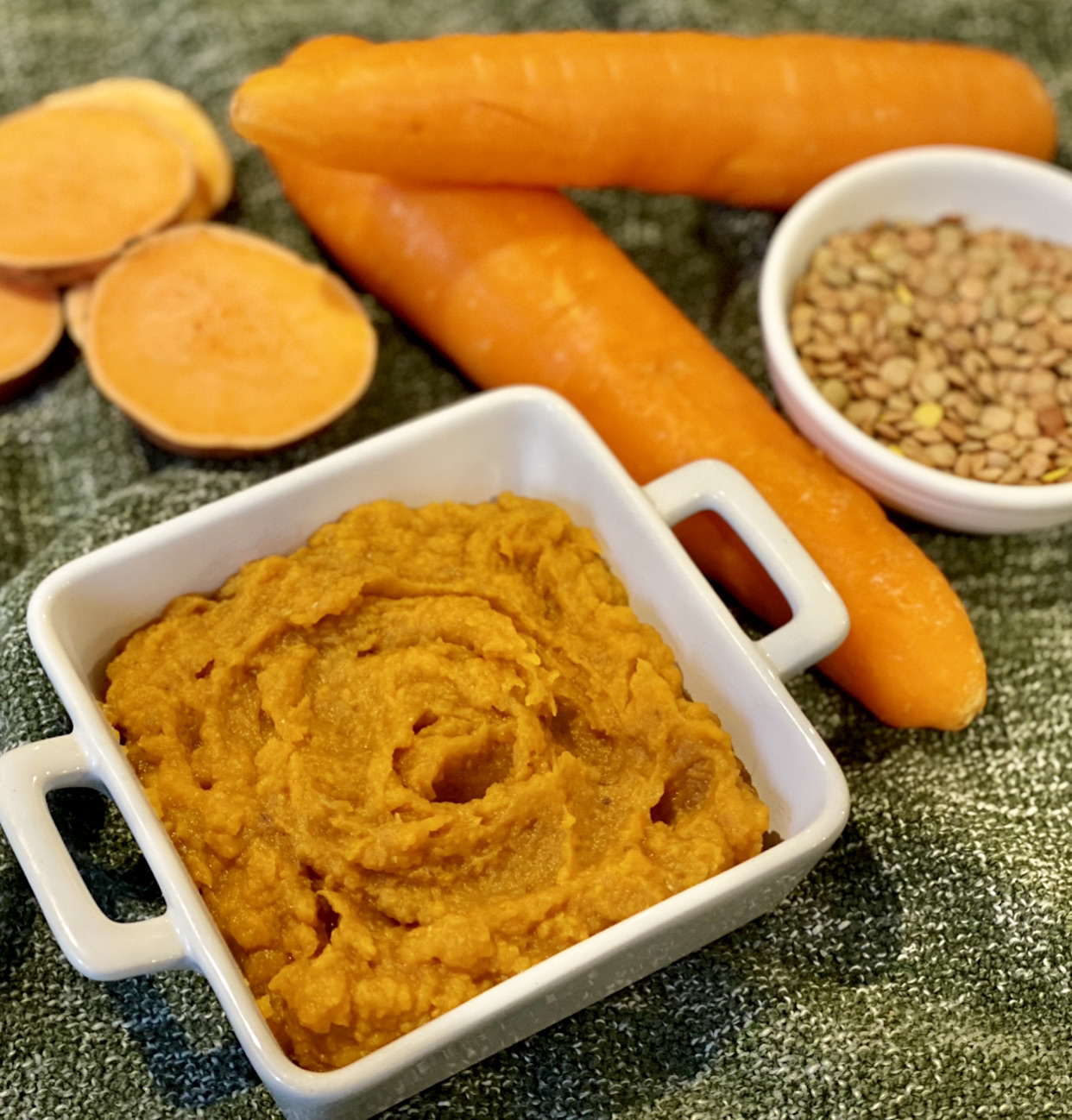
Lentils, Sweet potato & Carrot
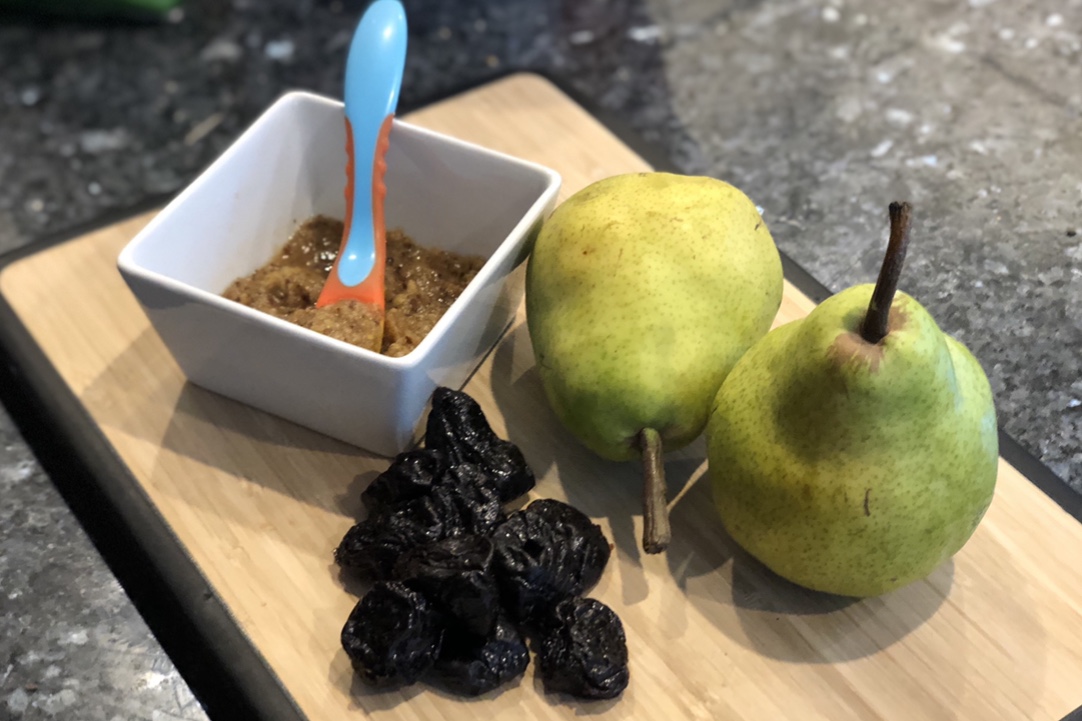
Prune and Pear Puree

Mango, Pear & banana Puree
Ingredients for Polenta Puree for Baby

Polenta (yellow cornmeal) – Supermarkets stock polenta or cornmeal near the flour or health section. Polenta has a coarse texture made from grounded dried corn. Some polenta has salt added to it, so have a look at the ingredients on the packet and get one that is 100% cornmeal.
Apples – I used red Fuji apples because they’re naturally sweet. For a smoother puree, peel the apple prior to cooking. Dice the apples into small cubes so they cook faster.
Strawberries – You could swap with any other berries or fruits, just as long as the fruit of choice is not overly sour.
Subscribe to 3CatsFoodie’s FREE Newsletter

For the latest recipes and other fun stuff!
How to make Polenta Puree for Baby
Step-by-step guide with photos

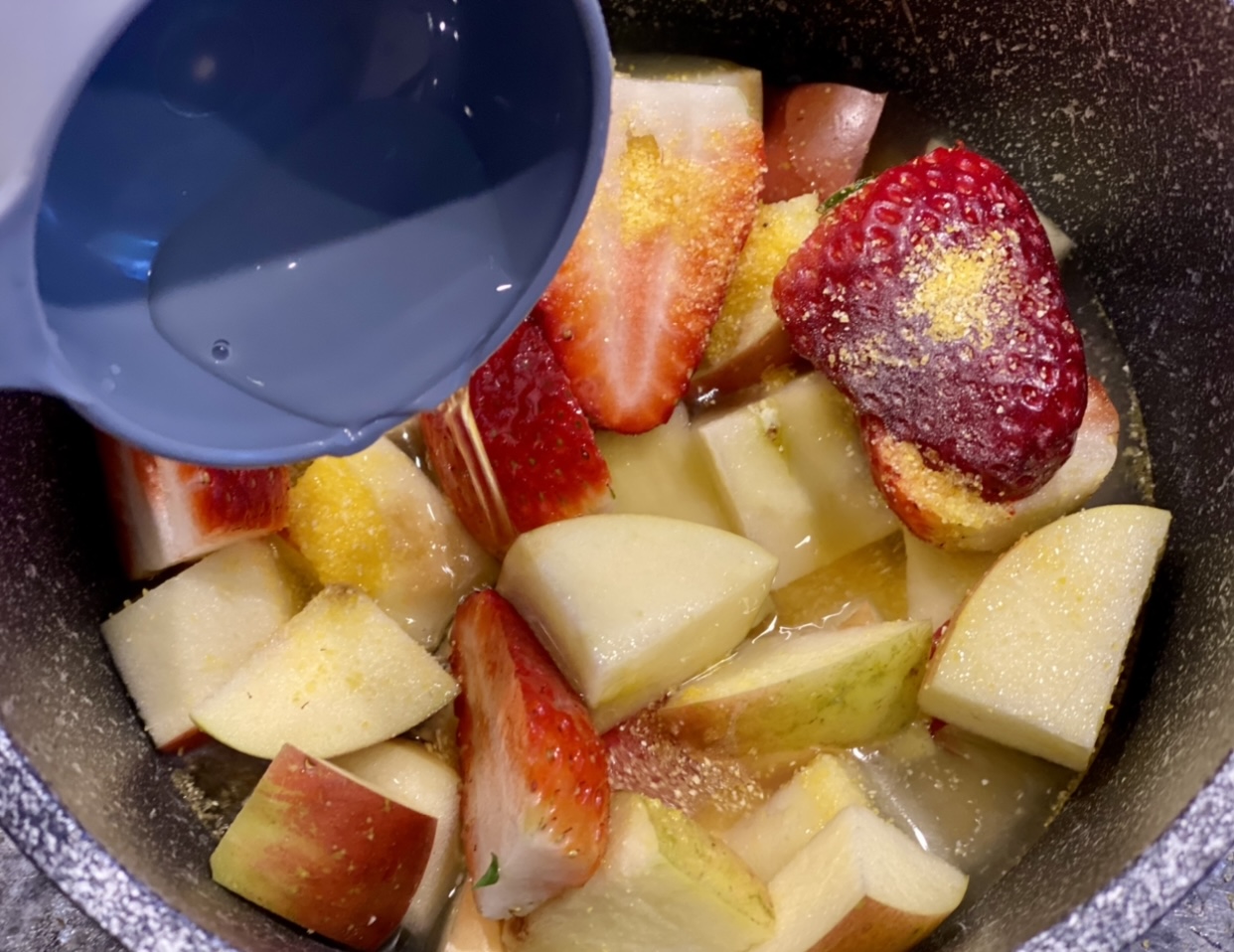
Place the apples and strawberries in a medium saucepan, then add the polenta and water. Put the saucepan over medium heat and stir occasionally until the polenta thickens and comes to a boil. Reduce the heat to medium-low, cover and simmer for 10 to 15 minutes or until the apples have softened. Remove pan from heat and allow to cool for 10 minutes.
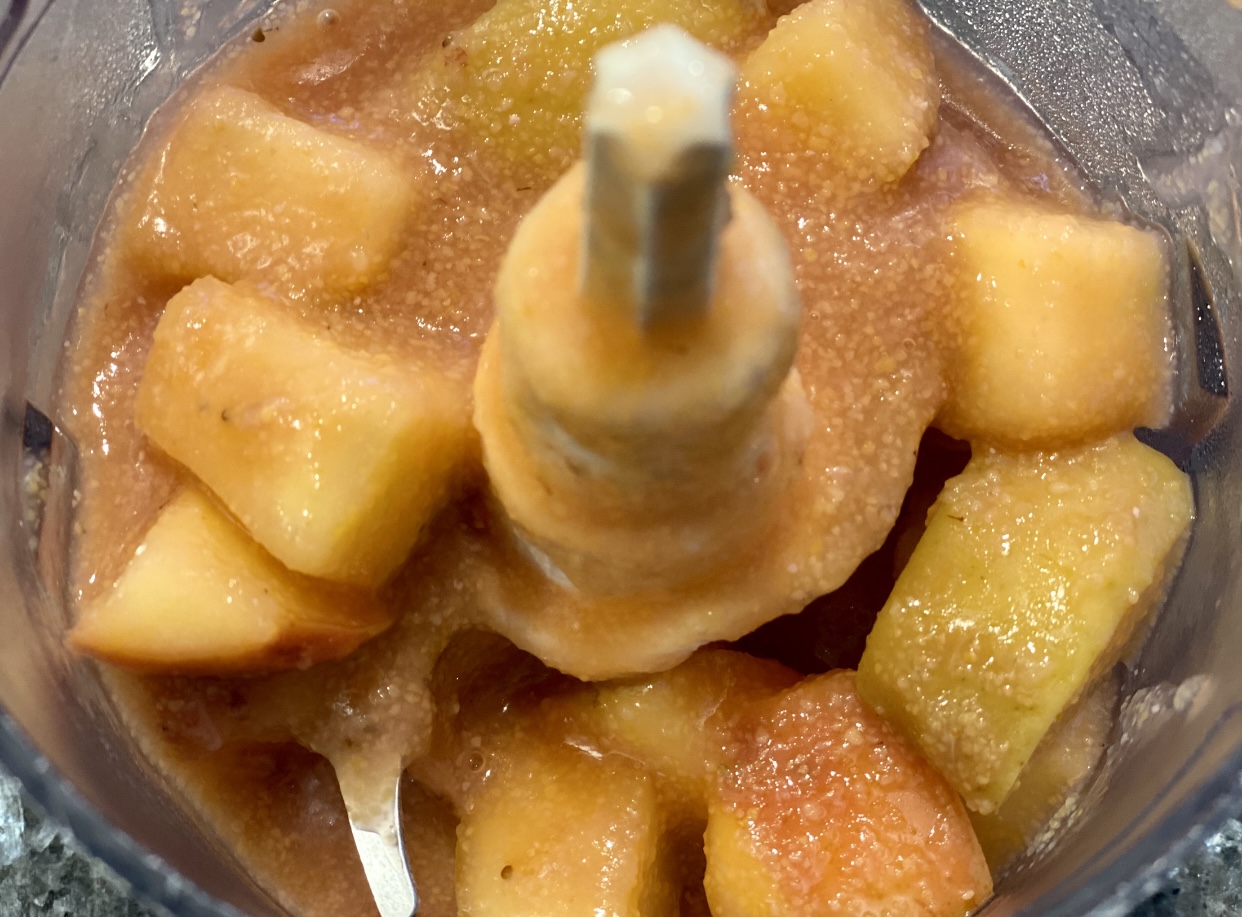

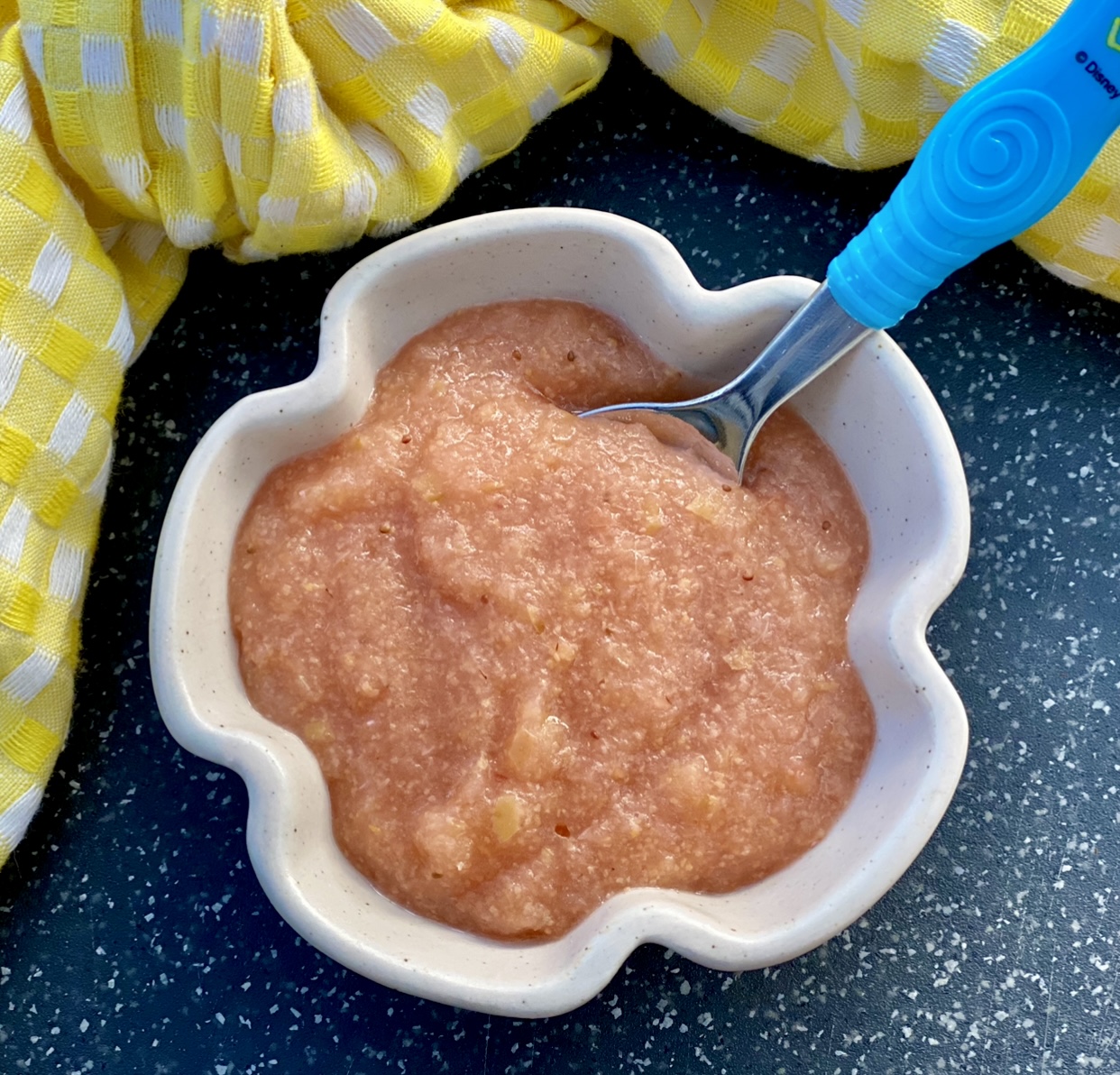
Transfer the polenta and fruits to a food processor or blender and blitz for 20 seconds or until it’s smooth. If the mixture is too thick, pour in a tbsp or more of cooled boiled/filtered water and blitz again for a few seconds. Allow the puree to cool down before serving.
Leftovers – Allow the polenta puree to cool completely at room temperature, then transfer into a sealed container and store in fridge for up to 3 days. To freeze, place the puree in baby food containers, cover and freezer for up to 2 months.
I’ve used a third-party application to calculate the calories and nutritional information, so please use this as an approximate guide only.
Cooking measurements are in Australian standard spoon and cup measurements. For specific details and conversions, visit our Australian Cooking Measurements page.
I would love your feedback and support if you made this recipe. To do this, please rate this recipe and provide a comment by scrolling down this page or by clicking that green circle on the bottom left. An email address is required (for spam), but it won’t be published. I would also love to see your dish, so don’t forget to tag me on my Instagram account ‘3catsfoodie’
Cheers – Cat T
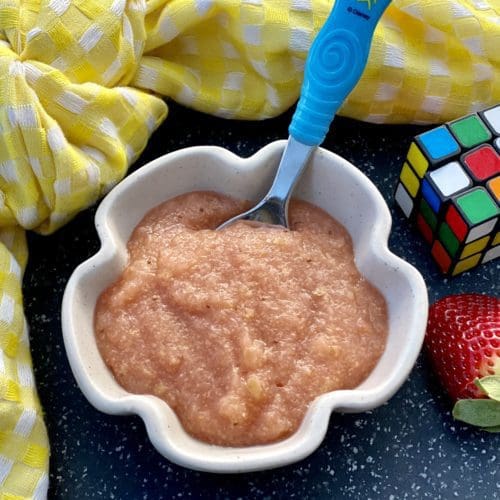
Polenta Puree for Baby (with Apple and Strawberry)
Ingredients
- 4 small red apples (ripe and sweet, diced into small cubes) (NOTE 1)
- 6 large strawberries (halved) (NOTE 2)
- 2 tbsp polenta (yellow corn meal) (NOTE 3)
- 1⅓ cup water
Instructions
- Place the apples and strawberries in a medium saucepan, then add the polenta and water. Put the saucepan over medium heat and stir occasionally until the polenta thickens and comes to a boil. Reduce the heat to medium-low, cover and simmer for 10 to 15 minutes or until the apples have softened. Remove pan from heat and allow to cool for 10 minutes.

- Transfer the polenta and fruits to a food processor or blender and blitz for 20 seconds or until it's smooth. If the mixture is too thick, pour in a tbsp or more of cooled boiled/filtered water and blitz again for a few seconds. Allow the puree to cool down before serving.



